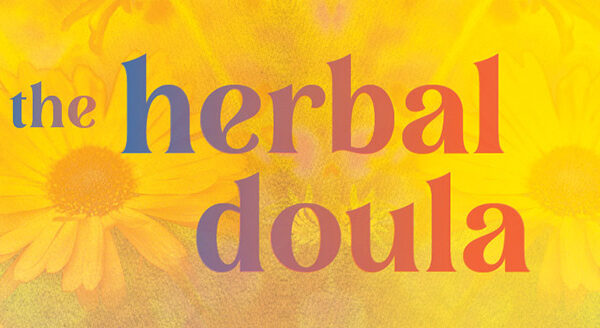
Land Back Resilience Tool
Categories: Ecology & Sustainability Excerpt New Release
While the concept of Land Back has existed since white settlers first violently stole Indigenous lands, the contemporary Land Back movement began over a decade ago as culture bearers and artisans disseminated the idea through art. The movement has recently gained visibility and traction thanks to land and water defenders, digital activists, and organizations like NDN Collective, who launched the LANDBACK campaign on Indigenous Peoples’ Day 2020. Today’s movement builds upon many generations of effort across Turtle Island and beyond to address the roots of colonization and reclaim stolen Indigenous lands.
The Land Back movement is not a monolith. For some, Land Back is literal; as Lakota matriarch Madonna Thunder Hawk says, “The only reparation for land is land.” For others, Land Back is primarily about sovereignty and cultural reclamation. Krystal Two Bulls, the director of NDN Collective’s LANDBACK campaign, offers specific demands that encompass both: (1) to return all public lands back to Indigenous hands, (2) to dismantle the white-supremacist structures that keep Indigenous peoples oppressed, (3) to defund and dismantle the systems that disconnect Indigenous folks from the stewardship of land, including the police, military, and border patrol, and (4) to shift policy from consultation to free, prior, and informed consent.
While there’s still a long way to go until the demands outlined by Two Bulls are met, there are countless examples of land and water return unfolding around the country, from a farmer in so-called Nebraska signing a deed returning ancestral tribal land back to the Ponca Tribe to the Eureka City Council voting unanimously to transfer ownership of the sacred Duluwat Island to the Wiyot Tribe. There is no singular, straightforward land return process, but more and more replicable Land Back models are emerging, including community land trusts, deed transfers, dam removal, co-management, and voluntary land taxes, among others.
The Land Back movement is increasingly being recognized as a cornerstone of environmental and climate justice, particularly since Indigenous peoples are proven stewards of lands, waters, and skies; Indigenous peoples comprise just 6 percent of the world’s population, but Indigenous-managed lands protect approximately 80 percent of the world’s biodiversity. To prevent future ecological harm and repair the harm that has been done, it’s imperative that relationships between Indigenous peoples and their ancestral homelands are restored.
To support and accelerate the Land Back movement as a settler on stolen lands:
- Research prompts: If you’re not currently residing upon the traditional lands of your ancestors, whose land are you on? What is the history of the land? Which traditional languages were/are spoken? What treaties were established by Indigenous tribes and settler governments? What was originally specified in the treaties, and have they since been honored by the settler state? How are Indigenous peoples in your region asking you to engage in the healing and repair of broken responsibilities with the land and their people? The Native Land app and website (www.native-land.ca) are great resources to begin your exploration, but keep in mind that information is crowdsourced and should serve as a starting place.
- If you have access to financial resources: If you’re currently residing someplace other than your ancestral lands, make a monthly or annual contribution to the Indigenous communities that originally stewarded the land (if they have consented to receiving monetary donations). If you’re a non-Indigenous business owner or leader of a school, group, or organization, an institutional contribution should be added to your annual expenses. This payment is sometimes referred to as a land tax, real rent, honor tax, or Shuumi. Sogorea Te’ Land Trust’s land tax calculator is a great tool to utilize if you’re unsure how much to give. This payment is a small way to acknowledge the territory’s history, repair relationships, and support the return and restoration of Indigenous land to Indigenous people. Make sure to ask your local government to pay their land tax, too.
- If you have access to land: Invite local tribes to utilize the land in whatever ways make sense for them, such as holding ceremony, growing traditional foods and medicines, gathering occasionally, and so on. If you own stolen lands, consider returning the land to its original stewards. Since the concept of individuals legally transferring land to Indigenous peoples is relatively new, there isn’t a singular, straightforward process. Instead there are myriad potential pathways and land ownership structures to explore. Begin the process by building relationships with Indigenous peoples in your region. Go slow, be patient, and honor complexity as it arises. Explore possibilities together.
- If you have access to time: Contribute your time, talents, and solidarity to Indigenous-led efforts to protect and reclaim their ancestral lands and waters. This may look like contacting your local and state representatives about projects that violate treaties and threaten Indigenous lifeways, like river dams and fossil fuel infrastructure, reaching out to federal representatives to let them know that you support the return of national public lands to Indigenous communities, or calling for your local land trust to return its land to its original stewards. It also might look like making art for protests, sending supplies to the front lines, gathering friends to show up for sit-ins and marches, offering pro bono legal services to help advance legal action, and on and on. There are infinite ways to get involved.
- If you have access to a robust community network: The previous action items are best done together. Gather friends, neighbors, and family members for an evening of good food, discussion, paying land taxes, contacting representatives, and/or organizing to support Indigenous-led efforts.
- General best practices: Follow the lead of Indigenous peoples in your area. Focus on building relationships. Show up with humility, patience, and consistency.
Excerpt from Climate Resilience: How We Keep Each Other Safe, Care for Our Communities, and Fight Back Against Climate Change




